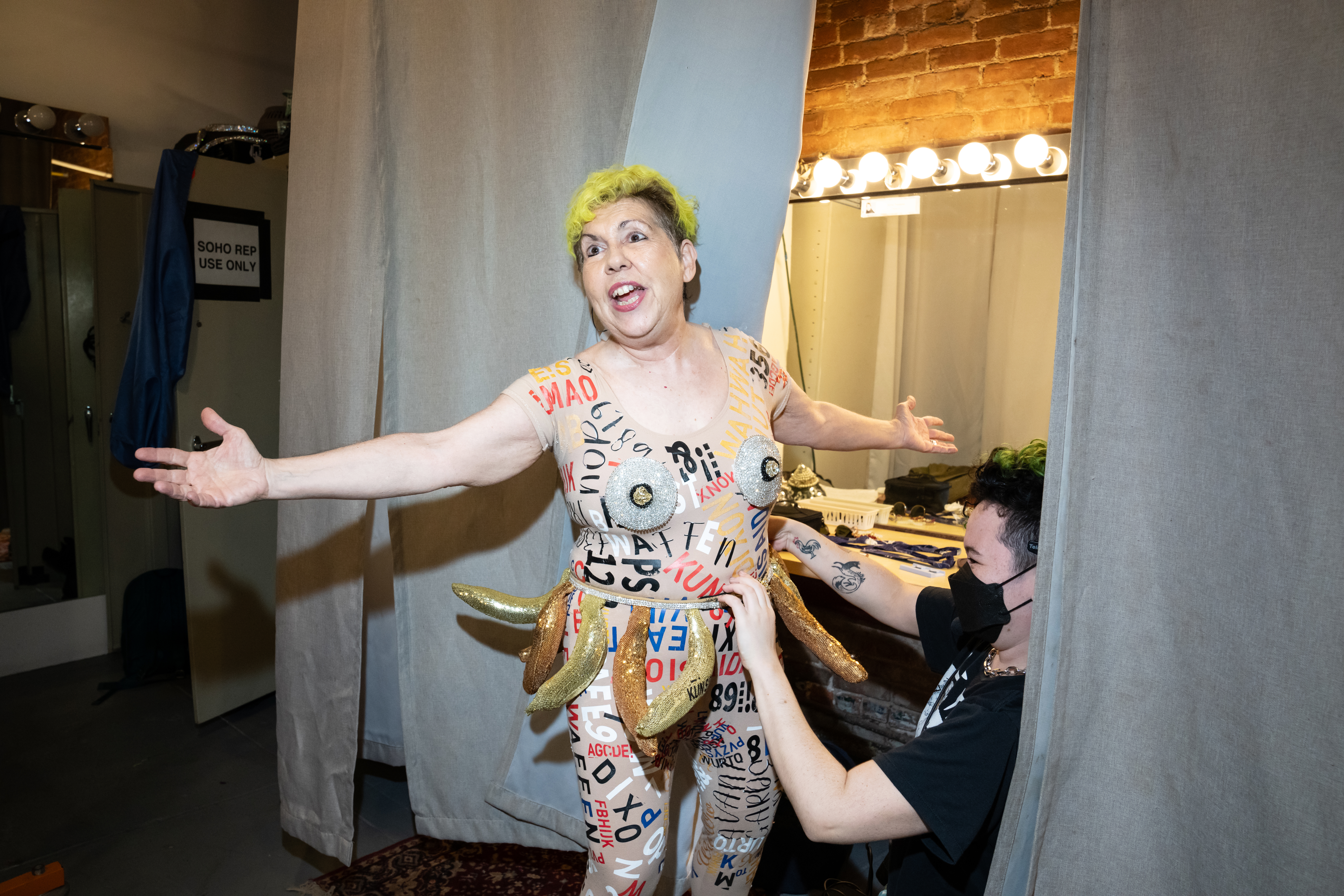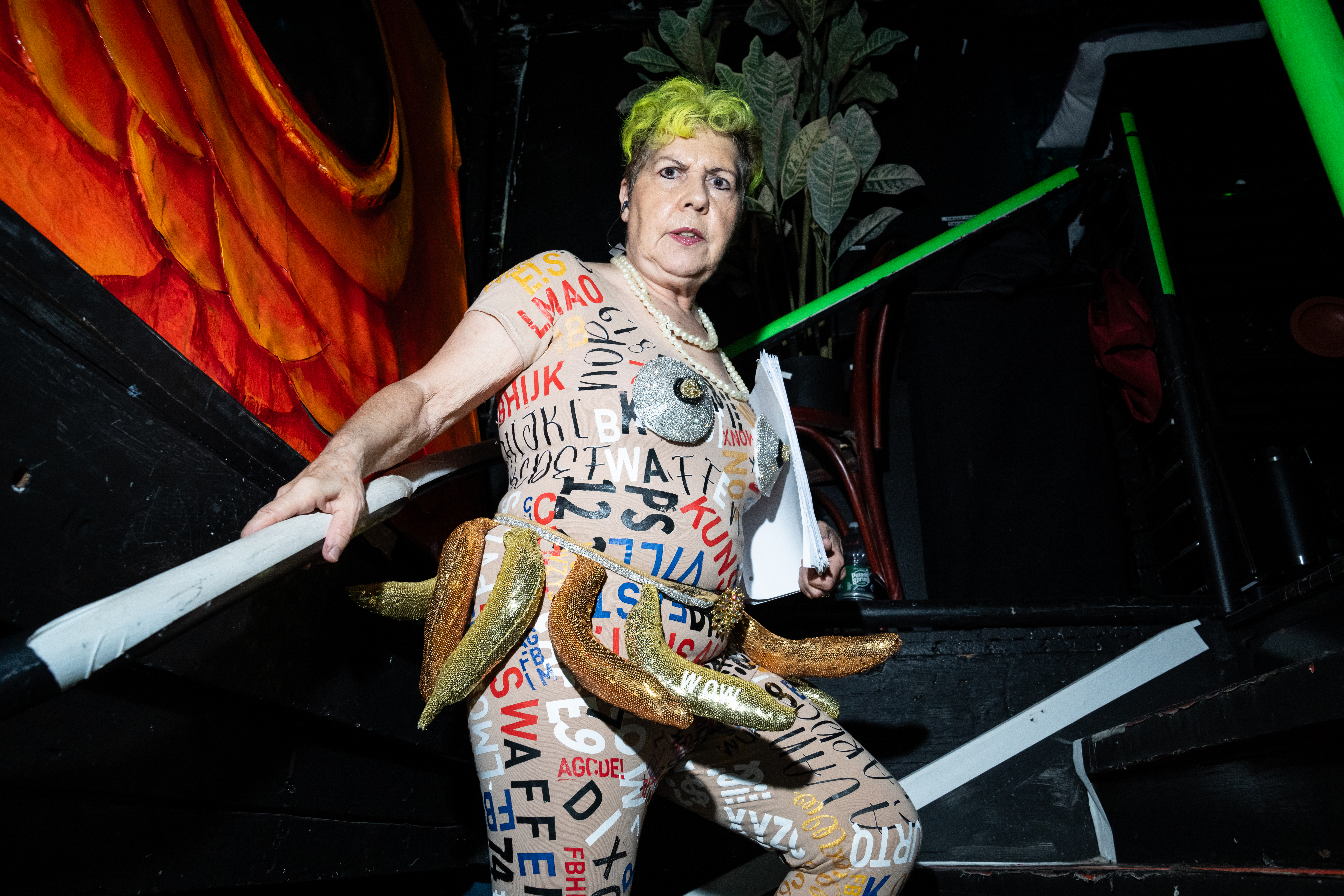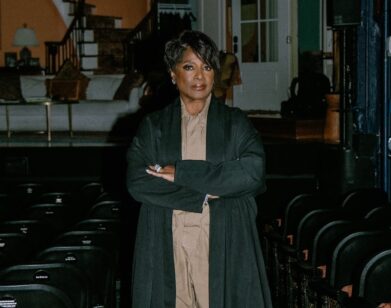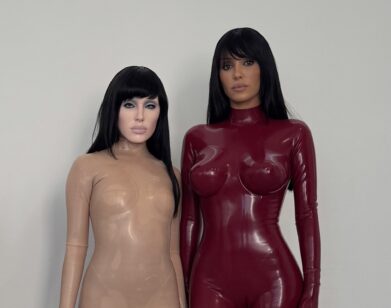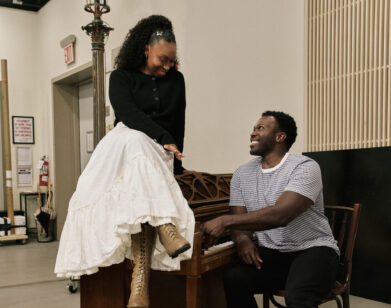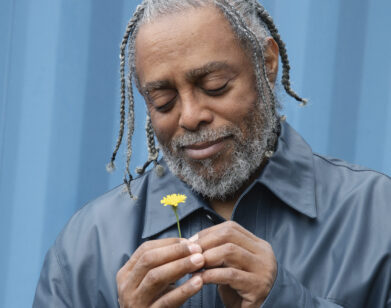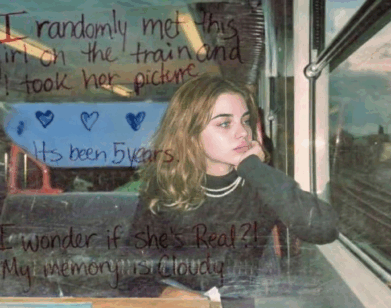BACKSTAGE
“I’m the Long-Reigning Queen”: Behind the Scenes With Camp Icon Alina Troyano
Theater is fantasy, and few indulge in it better than the campy performance icon Alina Troyano, whose provocative alter ego Carmelita Tropicana ushered in an era of queer spectacle in the downtown scene of the ’80s. But in show after show, Troyano’s fantasy grounds itself in more sobering realities—“Carmelita is tropical and topical,” she says. And this season, it’s about the value of art, both personal and transactional. Give Me Carmelita Tropicana!, Troyano’s collaboration with Tony-winning Appropriate playwright Branden Jacobs-Jenkins, follows Tropicana’s decision to kill off her persona as Jacobs-Jenkins makes her an offer for its purchase. It’s a story of the ultimate artistic burden, of New York nostalgia, and of endings—the production is also the final show to be presented at Soho Rep’s three-decade-long home at 46 Walker recently forced into flux. Just before showtime, Jacobs-Jenkins, who’s also Troyano’s former student, met her backstage to debrief on Cuban politics, becoming a pageant queen, and what it takes to be remembered.—MEKALA RAJAGOPAL
———
BRANDEN JACOBS-JENKINS: Should I call you Alina or should I call you Carmelita? Who am I talking to today?
ALINA TROYANO: Who am I? I don’t know who I am today, Branden.
JACOBS-JENKINS: Well, I know that Alina actually has a birth certificate somewhere, and Carmelita is ultimately a creation of Alina Troyano and maybe some other folks in our past. Maybe you should tell me the story. When did Carmelita Tropicana first appear?
TROYANO: Okay. So I was at WOW and there was a comedy class—
JACOBS-JENKINS: Can you explain what WOW is?
TROYANO: WOW is a theater space that began from a festival called Women’s One World Festival. But then the founders sort of thought that it would be great to have a space that wasn’t just for a festival, but for theater, with year-round performances and such. So I went to WOW, I saw a play, and I was hooked. It was really inventive and striking, and very different from what I thought feminist theater should be. And they were lesbians and they were bad girls. Who doesn’t want to be with a bad girl? You So I went to WOW for a comedy class, but I didn’t want to do comedy using my name. I was working for the city and I thought, “Oh my god, I’ll never be Mayor.”
JACOBS-JENKINS: Wait, what were you doing for the city?
TROYANO: I was working at a community board and I thought, “If they know that I’m in a play called The Well of Horniness, will I be Mayor of the city of New York? No.” And I was the one who always screamed. I was the best screamer. This show actually went on live radio. So I told the woman, “I can’t be me,” and she said, “Well, come up with a character.” I picked off the top of my head. The thing that came to me very organically was Carmelita Tropicana. It was spontaneous combustion. And that’s how it began.
JACOBS-JENKINS: Okay.
TROYANO: And then I had to perform the comedy routine at WOW because I was graduating, so you had to do your shtick. Before that, I told my two longtime collaborators, “Oh my god, I don’t know what I’m doing,” and they said, “We’ll dress you up.” And that’s how we even began collaborating, because they came up with a look for Carmelita. Once I had a look, it just freed me. I could be on stage without being me. And then I decided to do theater with both of them. So it started at WOW with other WOW members being part of the cast. There was Lisa Kron, who started off at WOW with The Five Lesbian Brothers. And Maureen Angeles was in it, and so was Peg Healy. It was all very, “Oh, be in my show.” So all these women who were lesbians and non-Latinas would just put on their own particular kind of Latino accent. Some were more Polish, some were more German. It was a mixed bag.
JACOBS-JENKINS: And what years are we talking about right now?
TROYANO: Probably ’83 or ’84. And ’84 or ’85 was when I won the Miss Loisaida Contest, and we only had one contest so I’m the long-reigning queen.
JACOBS-JENKINS: The inaugural and the only. That’s how monarchy usually works.
TROYANO: Exactly.
JACOBS-JENKINS: What was the Miss Loisaida pageant like? And the club and gay world of the East Village that you came through?
TROYANO: It was very much a gay world, very queer. There were performances all around a cluster of downtown. So you had a lot of different clubs, and by clubs, I mean bars that had performances. You would have short, quick performances, then you had drinking, and then you had dancing. That was the Pyramid, and King Tut’s Wah Wah Hut was another one. But then people started also having them in their own homes, and that was 8BC. They bought a building, renovated it, and they had performance downstairs and people would live on the top. Chandalier was the same thing. Ela Troyano and Uzi Parnes ran Chandalier, which was on their first floor, and they lived above. It was very much under the radar, all this stuff. You advertised by just telling people that you were having a performance. It was very, very informal. They were wheat pasting on walls outside. It was very ephemeral. So the Miss Loisaida was actually something that Uzi concocted. It was a beauty pageant that if you wanted to just go that night and be a part of the show, you could. We had several contestants and Uzi had a whole set of costumes in the back that people could rifle through and put them on and just go on stage. That’s how crazy a setup it was.
JACOBS-JENKINS: Who were the art stars in that scene? What was having the biggest impact on you creatively?
TROYANO: Ethyl Eichelberger, I would say. She was the reigning queen. In this Miss Loisaida pageant, she was actually the reigning queen, and she hosted it with Rita Red, who was part of Ethel’s entourage. Ethel was really a trained actor, and she would do interpretations of Medea, Clytemnestra, Lear, and then she would do Minnie the Maid or the Cabbage Patch doll. It was a real mix of things, and Ethel had a really big influence on just about everybody. Ethel died at 42. Because of AIDS, we had a real loss in our world. She had this great anthem of, “We are women who survive,” that she would play, and she played the accordion also. So it was a really lovely performance that she would have. And she would do it at PS 122. Those were places where you could do very ephemeral performances and train yourself, instead of going to school. That was what WOW was. Lisa Kron always said, “Oh my god, WOW is really where we got our training,” because you were an actor, but you could be a writer, a director, all those kinds of things.
JACOBS-JENKINS: Did WOW cease operations?
TROYANO: It hasn’t. It’s still around. I’m just not a part of it so I don’t know what they’re doing. But the space still exists and I know that they have writing workshops that Sharon Jane Smith sometimes is a part of.
JACOBS-JENKINS: I feel like you became a staple of PS 122. At a certain point in your career, when did you cycle out of the WOW culture?
TROYANO: Our first show was in ’87, but I had been doing work at PS like at Avant-garde-a-rama and hosting benefits. And then we got offered a show, and we did Memoria’s Memories of the Revolution there. Uzi Parnes co-wrote it with me. At WOW, they wanted to have women have all the important roles so that they had a platform. So although men could come to the shows, they did not want a man directing or writing. Really, it was a space run by women. And I was working with Uzi, so I had to get a special dispensation. It was like a papal dispensation to get Uzi, because we did Memories of the Revolution first at WOW but some women didn’t want to work on the show because a man was attached to the project. I was seeking other things, not just one way of working in the world, basically. So the aesthetic of PS 122 also appealed to me because it was a place where you could work with choreographers like Lucy Sexton and Annie Yobes doing Dance Noise, and I was in their shows. Ishmael Houston Jones was a choreographer. There’s a lot of multidisciplinary work. You could be in somebody’s show, somebody could be in your show. And that was very attractive to me.
JACOBS-JENKINS: It’s so funny. I think that Carmelita reminds me of how drag seems to work now. These young kids show up and everyone gives them a name, and they’re stuck with that name forever, and suddenly they’re on RuPaul’s Drag Race. Obviously no one knows the future, and you had no idea where Carmelita was going to go, but do you look back and see any noticeable shifts in the work? Have you noticed any trends or phases?
TROYANO: Yeah, you start evolving. Carmelita was very campy. It was big shows, lots of costumes, like the spectacle that we’re having now with our show. And then I was part of The Decade Show, which was a show by three museums about the multicultural identity of the ’80s. I started writing in a different way, a different tone that wasn’t as campy, more personal. And then my sister Ela saw some of that writing and said, “Why don’t you do a one-woman show to explore different tones of writing?” So that became Milk of Amnesia. I was going to Cuba and exploring the politics, and before I went to Cuba, I didn’t think that I had the right to talk about the revolution if I hadn’t experienced Cuba myself. I wanted that. And when I went through ’93, I experienced Cuba and I could talk about it in a very different way. So the shows became political in a different way, because I had a critique that was different from what I had. They were reviews within reviews. There was a trilogy of place that very much had a Cuban sensibility, but without talking about the Cuban revolution itself.
JACOBS-JENKINS: I always felt that Milk of Amnesia was a turning point in your body of work. I think it’s the first play where Alina herself shows up and it becomes about these dueling personas, basically. You were born in Cuba, right? But your family left when you were young.
TROYANO: More than anything, I’m a New Yorker. When I went to Cuba with my daughter, they thought I was fake and not really Cuban. And also, Cubans in New York are very different from Cubans that are living in Miami. Cubans in Miami were always pining for Cuba and were very entrenched in the political scene of Cuba and usually very right-wing. But that play that we had, Memories of the Revolution, actually had a couple of true stories of my father who was a revolutionary and fought during Castro’s revolution. He was in a faction, he made it to power, but then about a year into the revolution when they took power, he was asked to go visit a jail and do a report. When he went to the jail, he saw that there were political prisoners, people that had fought for the revolution, and he wrote a scathing report and then he had to leave because they were after him. So he was one of the first defectors of the revolution, and those things are partly there. There was a story about how there was an attempted assassination of the police chief, pre-Castro. We had that as a little scene in the play itself. The second act of Memories of the Revolution is dealing with a lot of religious iconography. It’s Carmelita escaping a fake Cuban revolution that she was leading. She escapes by boat with two other women, and instead of being the iconography of the virgin appearing to three fishermen, we have three fisherwomen. And the virgin is played by Uzi. She appears in the film speaking Yiddish, and she tells Carmelita that her revolution is not Cuba’s revolution. Hers is an international women’s revolution, and to go forth into the world and, “Give them your kunst.”
JACOBS-JENKINS: Yeah. I was also thinking about the UN hearing about the embargo this week and how, in some interesting way, Cuba always comes forward and recedes in the American consciousness politically, but I feel like your work has always been present. Like With What Ass Does a Cockroach Sit? and how wild that play is. I have students who have no idea who Elián Gonzalez is, but I vividly remember the SNL jokes about him. It was a cultural phenomenon, the way that Cuban news always is. It blips in somehow before it blips out. I don’t know if that sort of Cuban mania is a theme that you’ve embraced or stepped away from.
TROYANO: I’ve certainly done a lot of that. I started doing animal work to be a stand-in for immigrants, like how the roach is a disgusting creature. I began my work with fantasy. I had Chicas 2000, which was about cloning. I like to say, “Carmelita is tropical and topical,” so she uses whatever’s going on at the time. But you’re right. It’s really interesting how the culture changes. And if it’s topical at a certain point, like Elián Gonzalez, how’s that going to translate? I’ve mentioned people like Harvey Milk, and at one point, nobody knew who he was except if you were in the Bay Area. It took a film to present again to the world.
JACOBS-JENKINS: Yeah. I do think you’re a pioneer. Carmelita has always been this queer icon, even when she was talking about the headline.
TROYANO: I think WOW had a deep influence on me. And the thing about WOW was that it wasn’t about coming out stories. Everybody was out, and that was a really great way to be. The ’80s were so queer and people were allies of queers so there was very much a blending of people working with one another without that much of differentiation.
JACOBS-JENKINS: Right. I have an idea where Carmelita is now, but—
TROYANO: You know.
JACOBS-JENKINS: Yeah. Good luck tomorrow.
TROYANO: Thank you.


